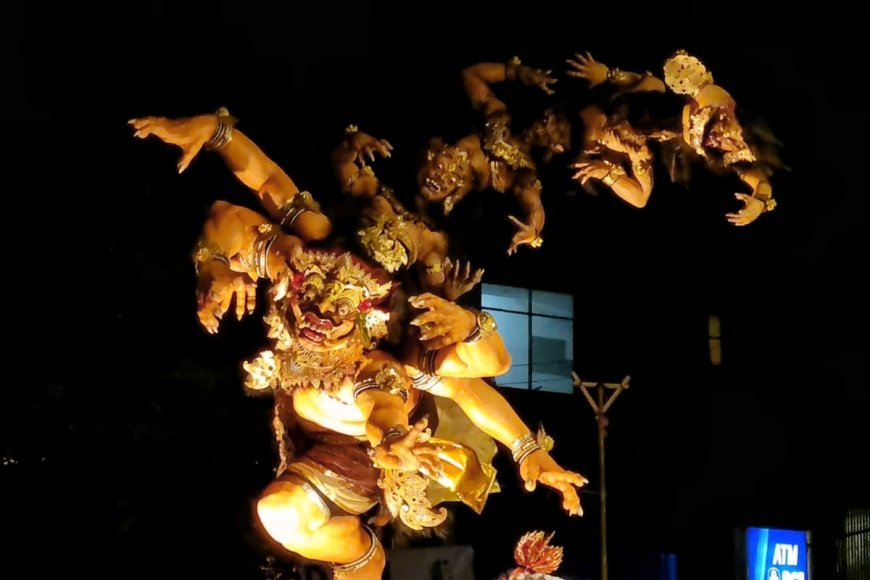The Ogoh-Ogoh Festival in Nusa Dua as a Sacred Celebration Welcoming Nyepi with the Symbolization of the Battle Between Good and Evil
The Ogoh-Ogoh Festival is one of the most anticipated traditions in Bali each year, especially in the lead-up to the Nyepi Day celebration. In various regions across Bali, including the tourist area of Nusa Dua, the Ogoh-Ogoh Festival becomes a cultural event that not only attracts tourists but also holds deep spiritual meaning for the Hindu community in Bali. This festival represents the symbolic battle between good and evil and is an important part of the Nyepi celebration.

The Ogoh-Ogoh displayed in the parade are usually depicted as mythological giants symbolizing negative traits such as greed, anger, and evil. The Balinese people regard Ogoh-Ogoh as a representation of evil forces or malevolent spirits that must be driven away before Nyepi, and they hold this parade to symbolize their efforts to purify themselves. However, at times, Ogoh-Ogoh are also portrayed as Hindu gods and goddesses representing positive traits or goodness, illustrating the duality of nature, where there is a balance between good and evil.

The Community Watching the Ogoh-Ogoh Parade (Source: Personal Collection)
In Nusa Dua, one of Bali’s international tourist destinations, the Ogoh-Ogoh tradition has retained its uniqueness despite being in a modern, tourist-filled environment. The local community of Nusa Dua participates in the Ogoh-Ogoh parade, held before the Nyepi Day celebration, where they carry large statues representing evil spirits. During the celebration, the atmosphere becomes more peaceful and respectful, even though the area is known as a luxury tourist hub with world-class hotels and resorts. Tourist attractions adjust their operations by reducing activities, lowering electricity usage, and creating a more spiritually harmonious environment. Visitors to the area are asked to respect local rules, maintain peace, and understand the spiritual significance of the festival. This festival demonstrates how the Balinese people are able to preserve their cultural heritage despite being in the midst of a modern and fast-paced world. Ogoh-Ogoh not only serves as a symbol of the battle between good and evil, but also as an expression of creativity and art that has been passed down from generation to generation. By maintaining the essence of these sacred rituals, Bali proves that modernity and globalization do not have to come at the expense of deep cultural values; rather, they can coexist, creating a unique appeal that cannot be found anywhere else.

Showcasing the Completed Ogoh-Ogoh (Source: Personal Collection)
Ogoh-Ogoh reflects the philosophical depth of Balinese culture. The artists do not merely rely on their technical skills to create it, but they also pay close attention to the symbolic meaning of each shape and color used. Each Ogoh-Ogoh carries a moral and spiritual message, inspiring people to always maintain a balance between virtue and desire. Many domestic and international tourists come to this festival, drawn by its profound meaning and grandeur. This shows how Ogoh-Ogoh has transcended its role as a local ritual and has become a cultural heritage that deserves to be appreciated and preserved worldwide.































































